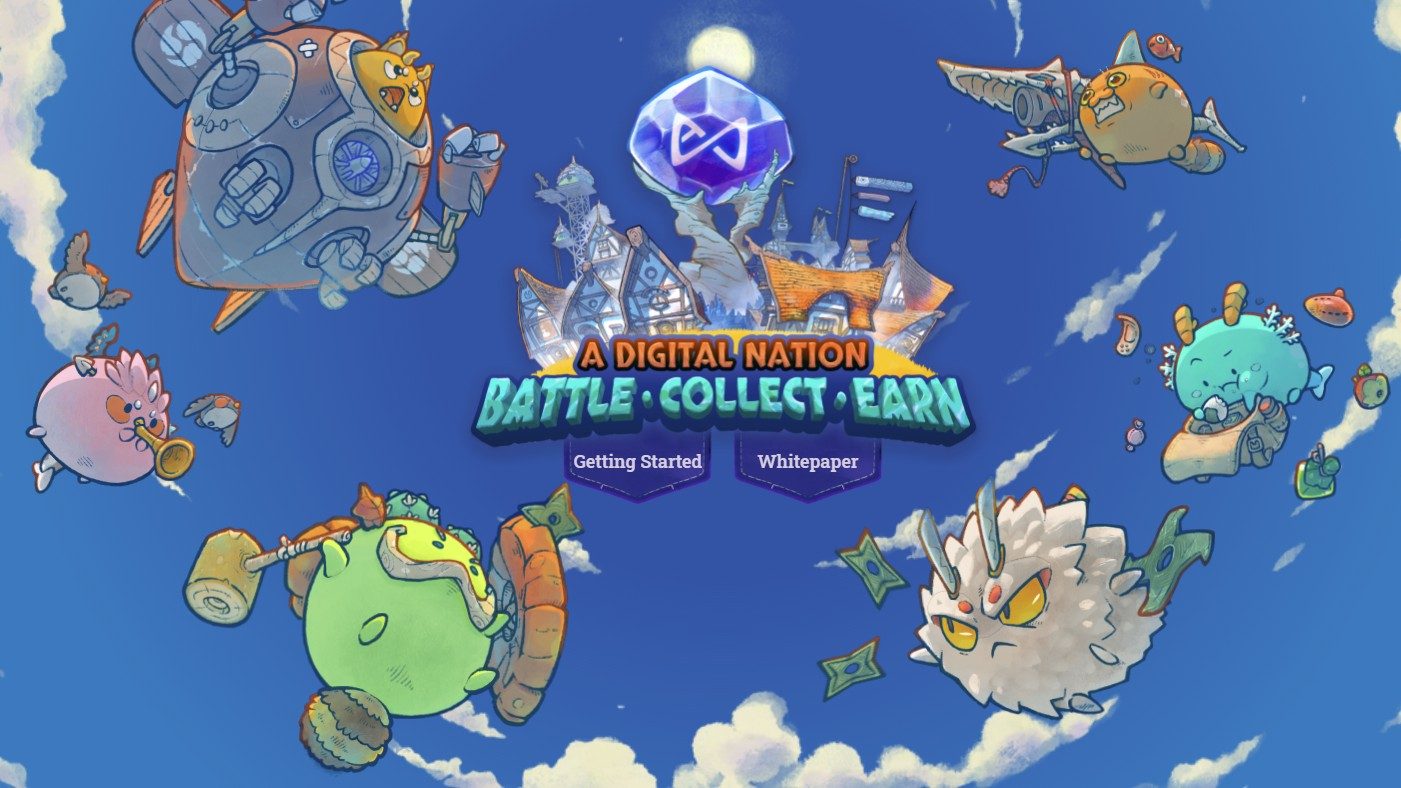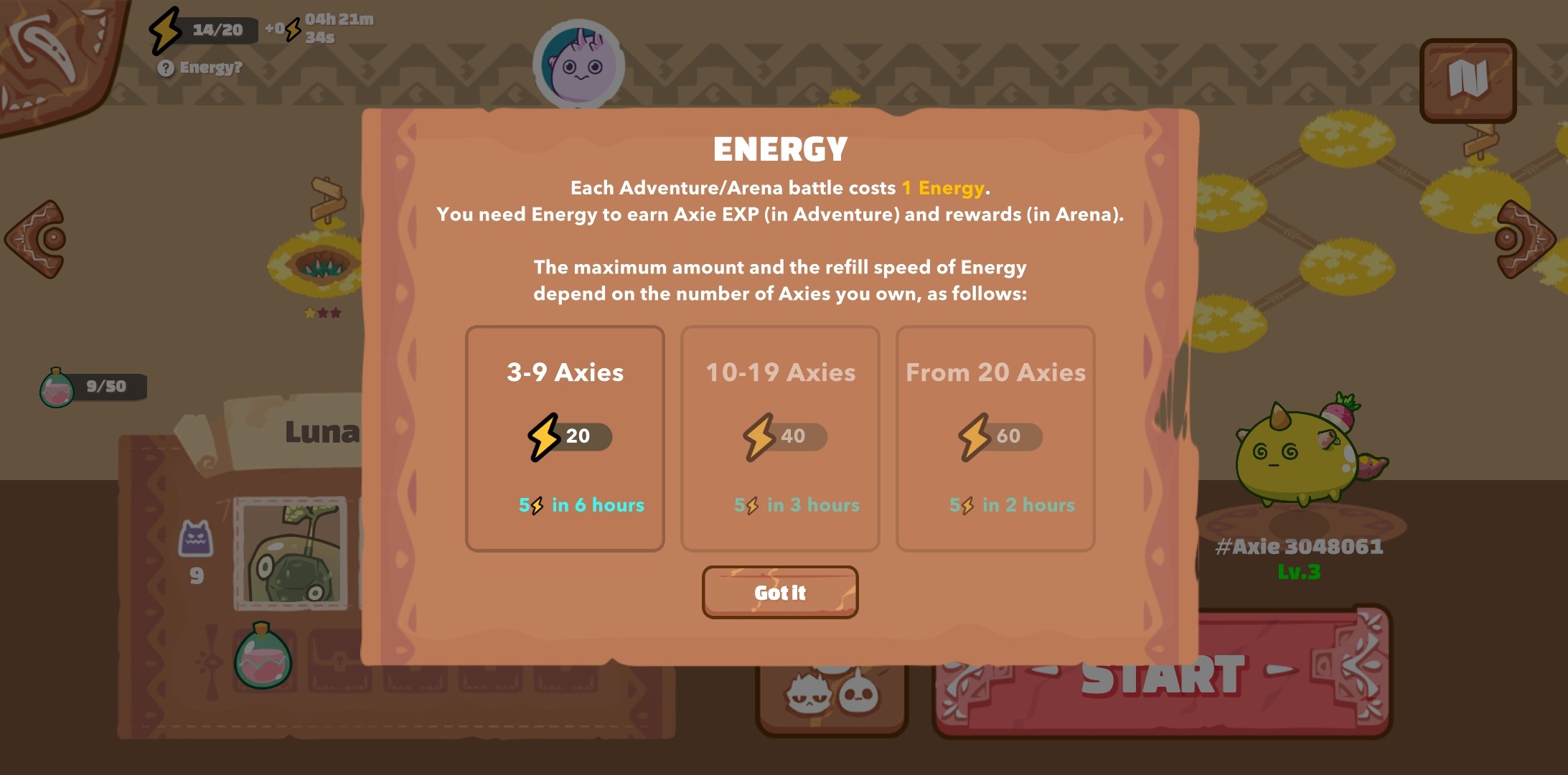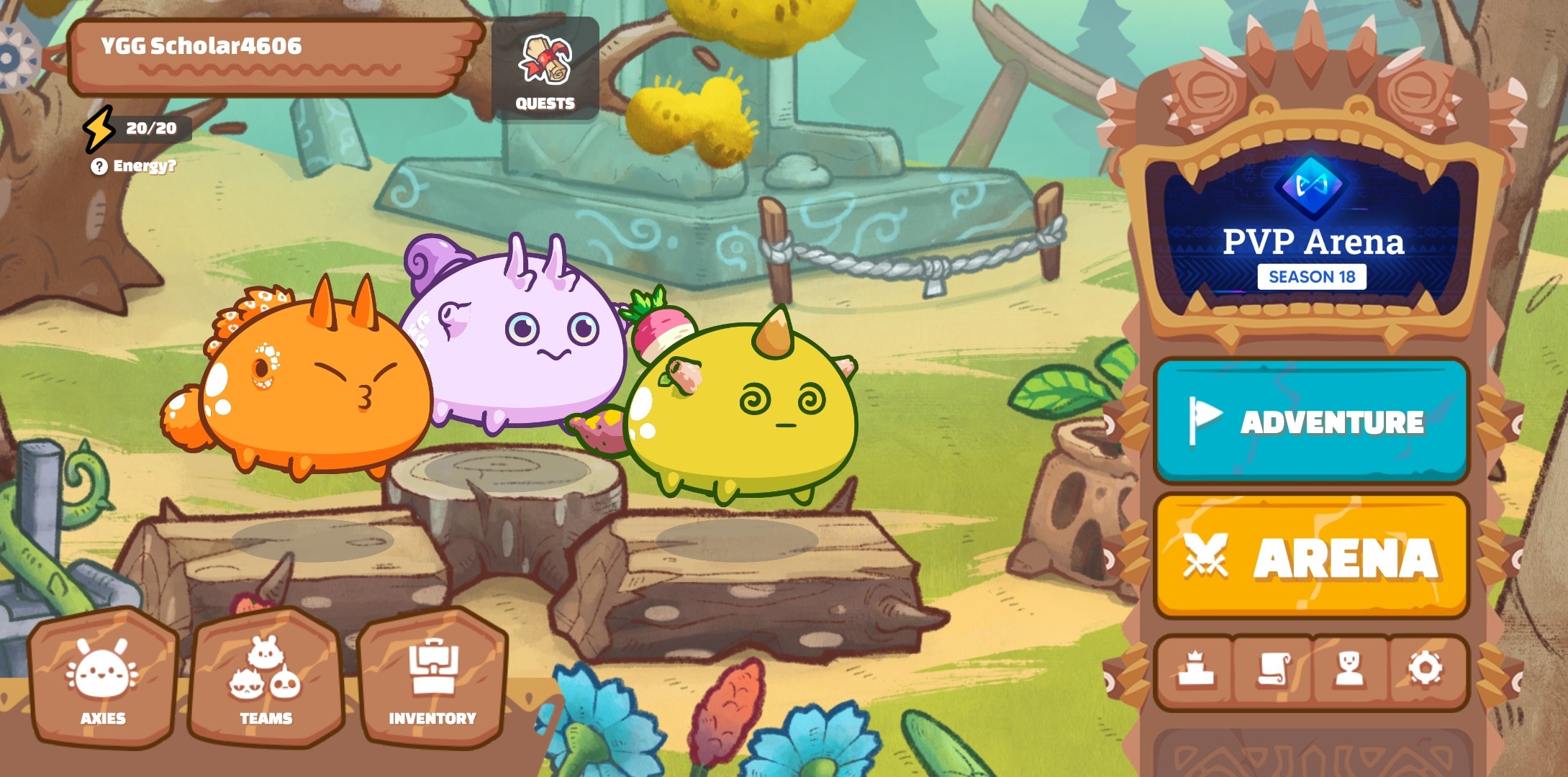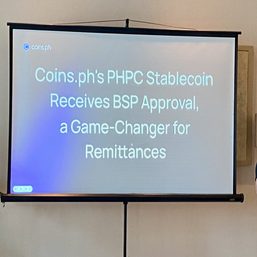SUMMARY
This is AI generated summarization, which may have errors. For context, always refer to the full article.

We have an in-depth review of Axie Infinity‘s core gameplay, the understanding of which is key to understanding the value of Axie Infinity as a whole.
Its card-based monster fights though are just one part of the game.
Axie Infinity is also one of a slew of games building a “metaverse.”
In Axie‘s case, a metaverse is a digital in-game world with possibly many different gameplay modes designed to sustain player interest, and in effect, its economy.
A metaverse economy, on the other hand, is characterized by the interplay between traditional cash economies and a digital in-game economy.
The breeding game mechanics’ role in the ‘Axie’ economy
Axie has a planned digital land ownership element, and already has breeding mechanics in place that is central to its economy.
The game’s breeding mechanics are essentially the way that the cards are produced much like the American company Wizards of the Coast producing Magic: The Gathering cards, and selling them to players.
The difference here is it’s the players that are producing the cards, as embedded in an Axie, selling them to other players.
But in order to breed an Axie, you need the in-game currency SLP (Smooth Love Potion), earned by winning games. The SLP is basically a token that captures the value created by a player creatively out-thinking and out-maneuvering an opponent.
For the player, the value of this clash of minds is also entertainment and mental stimulation, aside from the SLP reward. It’s not so different from two basketball teams trying to creatively outdo one another.
This is what Axie is trying to do, and I suppose other blockchain-enabled games too: it captures the value of this creative work put in by the player.
Winning pushes players through the ranks where the SLP rewards are bigger – meaning the best, most creative, and most hardworking players are being rightfully rewarded.
That SLP can be bought by breeders.
To breed an Axie, the breeder has to spend the SLP. The new Axie can then be sold to a prospective new player looking to buy into the game.
Let’s recap the flow:
- A player plays to beat an opponent to win SLP.
- The SLP can be sold to an Axie breeder.
- The breeder sells an Axie to a new player for traditional cash, which brings in real-world value to the Axie economy.
- The player buys Axies with the hopes of becoming good at the game to win SLP. The player would want to sell the SLP to recoup the costs of buying into the game, and hopefully to eventually make a profit.
Another way that the game makes you want to buy more Axies is by giving you more energy points to use – meaning more SLP- or experience-earning matches you can play – when you own a certain number of Axies.
You get 20 energy points per day, owning three to nine Axies; 40 energy points per day, owning 10 to 19 Axies; and 60 energy points per day, owning 20 Axies or more.

In a way, with this ownership-energy threshold, the game encourages players to buy more Axies in order to play more.
This system brings in more money into the Axie economy, but it’s also one of a few elements why some may worry about Axie as a ponzi scheme – especially when the game’s elements are isolated from one another.
Ponzis want you to give the ponzi schemers money, often with no real product to show, with the promise that you’ll earn it back many times over, but in reality, the ponzi schemer is just creatively and maliciously circulating that money within that fake economy.
Axie has a product. It’s a real game. It’s quite competitive. And as far as I’ve seen, it’s designed to funnel that money in its particular economy to players that have devoted their time to playing it really well.
That’s not to say that the Axie universe is bulletproof. Its developers have to be as incredibly creative as the players as well to maintain its value, to grow its value, and prevent a collapse.
If anything, it’s a work-in-progress proof of concept for decentralized blockchain-based gaming.
Again, just to reiterate, blockchain games differentiate themselves from traditional ones with its metaverse economy – which is, again, the merging of traditional cash economies with a digital in-game economy.
How traditional esports reward player skill
In traditional esports, the top players are usually rewarded in tournaments.
The biggest of these is The International for Dota 2 whose last iteration in 2019 had a prize pool of $34.33 million, with the grand champion Team OG taking home the $15.6-million lion’s share.
The International’s prize pool largely comes from the 25% of the sales of downloadable content which players buy every year in the lead-up to the event.
In Axie, the in-game economy’s money is coming from players buying into the game by buying the Axies, as mentioned.
The best of the best are also rewarded with another kind of in-game “governance” token called AXS, which developer Sky Mavis says will let owners have a say in the game’s direction, and how the metaverse will evolve, among other things.
Below are the AXS rewards for the top players in season 18 of Axie Infinity.

Note that the tokens indicated above are mAXS, which are kind of like cents to a peso but smaller. 1,000 mAXS is equivalent to 1 mAXS. At the time of this article’s posting, 1 AXS is US$70. So, making the conversions, the best player of this season (a season is about 4 weeks), can win 225 AXS or about US$15,750.
As for Axie‘s Adventure mode, the creativity required to beat the computer-controlled enemies, with enough repetition, can become mindless busywork eventually. And that has less worth than creative work.
Sky Mavis, in the latest season of the game, actually made a major change to steer gamers to PVP more, by cutting the SLP in Adventure mode, and increasing PVP rewards.
The Adventure mode, in its current form, is more of a set of training wheels for inexperienced players. But as with most competitive multiplayer games, a key portion of the value of Axie Infinity, now and likely in the future, lies in its exciting PVP matches.
Comparisons to player rewards in traditional games
Axie is marketed as “play-to-earn” but that’s also partly the case with esports already.
The difference is that, right now, you can still play Axie casually to earn. You can choose to play without too much effort, and still earn a dime.
But specially as players get better, it may be more “win-to-earn.”
Let’s think in basketball terms.
Think of basketball as a metaverse like the Axie universe. Basketball is still just a game if you think about it – not so different from Axie and other competitive video games.
The NBA, while it has a huge role, is still just a creation within this basketball metaverse.
The NBA’s spot in the basketball metaverse is that it built and groomed what has, over the years, become a massive, massive economy paying top players hundreds of millions of dollars – and big money as well to its other participants from the arena employees to the richest basketball team owner.
The NBA’s spot in the larger basketball ecosystem, is that it represents the biggest prizes and rewards that those who have truly dedicated themselves to the game can win.
All competitive videogames out there – Axie included – are, in fact, on this trajectory. Among these competitive games, basketball included, what’s different are the roles played by the types of participants in it – players, owners, developers, breeders, basketball trainers, what have you.
The Dota 2 comparison
In traditional videogames, it’s the developers like the aforementioned Valve that hold the greatest economic power, and has great power to shape how well its best players, and other participants will be rewarded.
In Axie, it’s a player-driven economy that drives the monetary rewards.
That’s one aspect of Axie being a “decentralized” game. More economic power is in the actual player as opposed to Dota 2, where the economic rewards somewhat rest in the decisions of a central figure, Valve.
Compared to the rest of the participants within the Dota 2 economy, Valve still has more power. Valve’s just an example but this is likely the case with most traditional games as well.
For example, last year, Valve cancelled The International 10, mainly because of the COVID-19 pandemic, leaving the efforts of the best Dota 2 players largely unrewarded.
The Philippines’ TNC team was actually among those who were hit by this big decision. The team was poised for a run in that 2019-2020 Dota 2 pro season, having won the first of the five “Major” tournaments that season, which ensured them a key spot in what would have been The International 10.
While, of course, Valve had the player’s interests in mind and player sentiment can readily be seen in online forums, players still have somewhat of a smaller say in this setup.
On the other hand, NBA players gain or enhance their say through its labor union, the NBA Players Basketball Association.
Meanwhile, the proposed idea of blockchain games is for players to protect their interests by participating in ways that are beneficial to, and would sustain or grow the blockchain game’s economy.
You could say the same for traditional games, but blockchain games appear to have a trait that allows it to give some more power to the players.
Sustaining interest

In our review of the game, we compared the learning curve of Axie Infinity to two other multiplayer games.
A game that has a tougher learning curve might also be tougher to master. And as a gamer, that constant challenge keeps you engaged and interested, keeps you playing the game, and keeps you in the economy.
Just based on my history with Apex Legends and Arena of Valor, my very rough estimate is I’d play Axie for roughly around 50 hours – ignoring all the other aforementioned elements that make up the game including the money rewards – before I start to play it more sparingly.
At that point, if I actually loved the game or perhaps saw that I had potential to become a handsomely rewarded elite player, then obviously, I’d start playing far beyond the 50 hours.
Or I could also try my hand at breeding Axies, and building my own Axie teams. On the flip side, I could also choose to leave and start playing another game.
Axie‘s sustainability and growth, just like all the other competitive games out there, depends on how well it could keep players playing and how well the developers Sky Mavis could steer the game. Will it be a long-hauler like the Dota 2s, and the Counter-Strike: Gos of the world?
The buy-in price is much bigger relative to what gamers have been traditionally used to paying for games So ask yourself: how much do you believe in the game, and in its developers, along with consideration for its pioneering elements?
Decentralized blockchain-enabled games are here, and they will disrupt the gaming industry like any good emergent technology worth its salt. Axie Infinity is among the first big names to emerge.
It certainly feels like its the first-to-market “play-to-earn” game like Bitcoin for cryptocurrency. And certainly, it feels like it also has the potential to do for blockchain gaming what Twitch did for video game streaming: to get the whole shebang to scale.
Blockchain games as an addition to the leisure economy
As I thought about these blockchain games, I remembered a quote from an article I wrote in 2016.
An executive discussing how technology is freeing us up from menial tasks quoted the futurist and musician Brian Eno: “One day, humans will be living a life of leisure, our every need met by machines and computers, leaving us free to pursue more intellectual and creative pastimes. And rather than engaging in tedious, repetitive work, this will herald a new arrival of the leisure economy.”
I wrote then: In a nutshell, the leisure economy is where an individual reaps financial benefits from pursuing a passion. And it’s happening right now. People sharing their love of food, travel, sports or fashion on the Internet, and developing a revenue stream out of it – that’s the leisure economy. Musicians and artists self-publishing their works online, and building an audience out of it – that’s the leisure economy.
Add gaming and blockchain games to that. Certainly, before these blockchain games, gamers have already been monetizing their love for games through streaming.
Blockchain games are going to add to that. It’s disruptive in that it will be another way that people’s appetite for playing games can be corralled and monetized. And this new system captures the value generated by players creatively outworking and out-thinking everyone else.
As to the scale and size of the disruption? That’s what I can’t really say for now except that it would be foolish for the gaming establishment to not keep a close eye on this.
If anything, it has already given me a more palpable understanding of what the value of a decentralized blockchain network is, and it’s also introducing the Philippines – which historically is sort of a testing ground for new software, apps, social networks and such – to the world of cryptocurrencies.
Learning cryptocurrencies now feels like it’s similar to the value of learning how to code software in the past. – Rappler.com
Disclosure: Special thanks to Yield Guild Games for lending an Axie team for the purpose of this review.
Add a comment
How does this make you feel?






![[GAMES & GADGETS] Product announcements, prices, and promos: July 2024](https://www.rappler.com/tachyon/2024/06/gadgets-and-games-dev-story.jpg?resize=257%2C257&crop=287px%2C0px%2C720px%2C718px)



There are no comments yet. Add your comment to start the conversation.